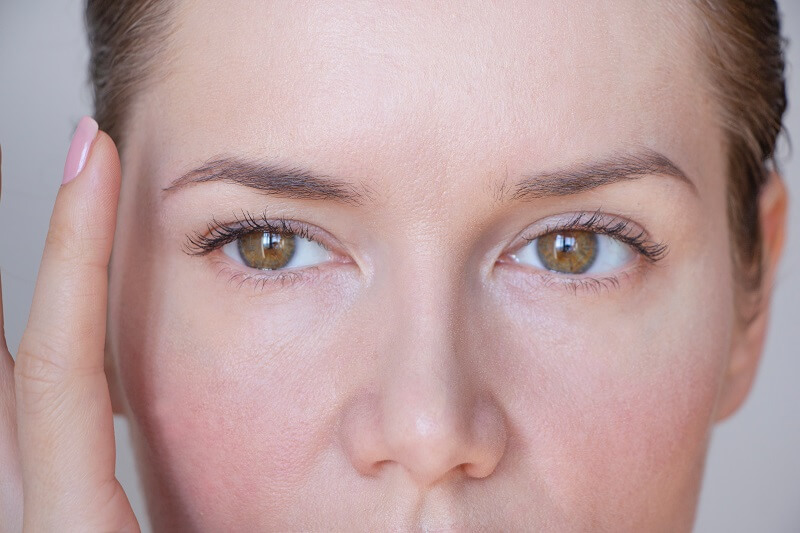Botox delivers amazing wrinkle-reducing results, but some patients experience unwanted side effects. The most common, such as bruising, are mild and subside after several days, while others can last until the neurotoxin wears off.
One of these long-lasting side effects is a droopy eyelid. It occurs in less than 1% of patients who have their treatment at a reputable med spa. However, when an untrained, non-medical provider administers Botox, the risk of drooping eyelids increases.
This article explains why drooping eyelids occur after Botox and how to prevent or correct this side effect.

Why Do Eyelids Droop After Botox?
Drooping eyelids (ptosis) occur in two situations:
- After a forehead Botox treatment, when the toxin spreads to the frontalis muscle, relaxing the brow too much and pressing down on the upper eyelid.
- After a Botox treatment for glabellar (frown) lines, when the toxin diffuses into the levator palpebrae superioris muscle that controls the upper lid.
Eyelids may droop after a Botox procedure if the provider administers too much Botox or injects it in the wrong location. In rare cases, the neurotoxin spreads to the wrong muscle causing eyelid drooping when the patient doesn’t follow the provider’s aftercare instructions, such as lying down or bending over.
Note: Find out how long after Botox can you lay down.
How Long Does a Droopy Eyelid Last After Botox?
A droopy eyelid can last from several weeks to several months or until Botox wears off. Patients usually notice the first signs of this side effect within the first week.
How to Prevent Droopy Eyelids from Botox?
Before getting Botox, learn how you can reduce the risk of side effects, including droopy eyelids.
1. Choose a Qualified Medical Provider
The best way to prevent droopy eyelids from Botox is to schedule the treatment with a skilled medical professional with expertise in this type of procedure. They know exactly where and how much of the neurotoxin to inject for safe and effective results.
Medical professionals at Vibrant Skin Bar have vast experience and countless satisfied patients to testify of their remarkable skills with neurotoxin injectables.
2. Disclose Your Medical Information
Botox providers typically ask patients to disclose their medical history and what medications and supplements they take, because some conditions and medications increase the risk of side effects. Doctors evaluate this information and determine how to minimize the risk (postponing the treatment, discontinuing the medication, etc.).
3. Follow the Aftercare Tips
Certain behaviors before and after the procedure increase the risk of side effects. The following may cause Botox to migrate to other areas and result in droopy eyelids:
- Bending over or lying down
- Pressure to the treated area
- Exercise
- Vigorous head movements
Listen to your medical provider and follow all aftercare tips to achieve optimal results.
Note: Read our blog post on what to consider before getting Botox to better prepare for the treatment.
How to Reverse a Droopy Eyelid After Botox?
If the patient develops a droopy eyelid after Botox, the medical provider can recommend the following treatments to reverse the condition.
- Another Botox intervention to correct the drooping eyelid.
- Eye drops that tighten the eye muscles and elevate the eyelid, such as apraclonidine and brimonidine.
- Massaging the area around the eyes to stimulate the eye muscles.
- Electrical stimulus treatments to activate the eye muscles.
Conclusion
Botox side effects, like a droopy eyelid, are rare but unpleasant and may last for several months. The best way to prevent it is to choose an experienced medial provider with extensive experience rejuvenating patients with Botox.


